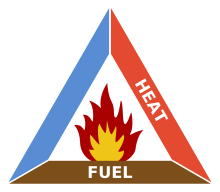- Joined
- May 6, 2011
- Messages
- 14,697
- Reaction score
- 5,704
- Gender
- Male
- Political Leaning
- Independent
Hope the anti logging enviro nuts are happy.
Hope the anti logging enviro nuts are happy.
I hope this tragedy causes firefighter planners to rethink their strategy. As I understand it, these men were trying to save some homes. Empty homes. One would think that, with all of the technology out there today, firestops wouldn't even take a human presence. Saving homes built in wildfire danger areas? Let them burn. They have insurance.
I hope this tragedy causes firefighter planners to rethink their strategy. As I understand it, these men were trying to save some homes. Empty homes. One would think that, with all of the technology out there today, firestops wouldn't even take a human presence. Saving homes built in wildfire danger areas? Let them burn. They have insurance.
I agree with letting empty structures burn rather than risk the lives of the fighters. The down side to that is people will not be able to get fire insurance if that becomes part of the standard protocol.
Also, keep in mind this event had nothing to do with their strategy, the wind changed direction on them which can (and does) happen quite frequently.
Every time I read about the wildfires in California (as an example), I think to myself, "Why on EARTH would people build homes in these areas?" I guess that's what I'm getting at. It's hard for me to believe that, with all the technology out there, we don't have a better way to put out fires than putting men in harm's way to dig/excavate firebreaks. One would think there's a better way.
And I agree with you about the wind change: firefighters' worst enemy.
Heat, Oxygen Fuel.People build homes in these areas cause they are secluded and it's a beautiful area. Doesn't matter if it's California or Maine. Technology for firefighting, be it a home or wild fires has been the same for centuries. It's really never changed. You dig break lines because putting out a fire that is spreading is impossible. Without the break lines you can't do air drops of water or some flame retardant. But even then putting out with water isn't the best for all. Letting the fire burn out is the best case for all. It'll make sure the risk of a fire in that area is practically 0% for the next 10 years or so. It'll allow regrowth as some of the chemicals used in flame retardant prevent growth.

Heat, Oxygen Fuel.

Once fire breaks out, there is not much you can do about #1 & 2.
The South-west USA is warmer than it was. The fire "season" is two months longer now than it was thirty years ago. On top of that, Arizona's population has risen 25% in the last ten years alone. The risk is higher, and more people are exposed to it too. RIP the fire crew.
South-West warmer? It's a desert. It's always been semi-arid (mountains) to arid climate.
Just because tit was warm to start with doesn't mean it can't be warmer. Two extra months of raised fire risk indicates prolonged high temperatures in an already high-temperature area. Are there a lot of heavily wooded (see sawyerlogging's post) desert areas?
These men, in this situation, followed protocol to the letter. They took no more risks than what was expected of them when they took the job. Fires are unpredictable and this one was no different. They knew that, but went out to do their job, which is what they trained to do. Many had families and people to go home to. The implication of grand-standing is disgusting.
Every time I read about the wildfires in California (as an example), I think to myself, "Why on EARTH would people build homes in these areas?" I guess that's what I'm getting at. It's hard for me to believe that, with all the technology out there, we don't have a better way to put out fires than putting men in harm's way to dig/excavate firebreaks. One would think there's a better way.
And I agree with you about the wind change: firefighters' worst enemy.
I could also carry that philosophy out to include people who build homes/towns along rivers, in floodplains, in areas prone to hurricanes or tornados... etc.
Natural/man-made disasters happen in just about every place around this country. In Californians didn't build homes in places where wild grass and trees grow, there would be no people in California. The valley is completely covered in wild grass and scrub, the deserts covered in flammable shrubs, the mountains are covered with trees.
Don't mean to leap at you, Maggie, but I hear this all the damned time when California has a disastrous fire... most of which occur in cement, asphalt covered suburbs like the Oakland Hills... but when tornadoes flatten Oklahoma, when floods cover St. Louis, when hurricanes flatten the Gulf coast, the east coast or Florida, it's all "oh those poor people, what a tragedy!" When California has wildfires or earthquakes, it's all "what do they expect when they live over a fault zone and build homes near flammable stuff, like grass and trees."
This is a terrible tragedy, and the fact that there are people living in and around Prescott should not feel that their town or homes are to blame because they exist.
South-West warmer? It's a desert. It's always been semi-arid (mountains) to arid climate.
Not all is desert. Actually States like AZ and NM for example have very diverse terrain and ecosystems. It ranges from desert to conifer forests.
